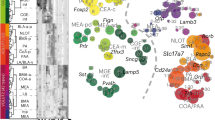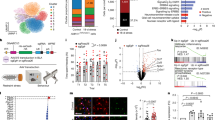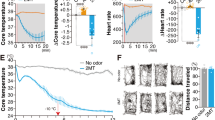Abstract
Alarm pheromones are airborne chemical signals, released by an individual into the environment, which transmit warning of danger to conspecifics via olfaction. Using fMRI, we provide the first neurobiological evidence for a human alarm pheromone. Individuals showed activation of the amygdala in response to sweat produced by others during emotional stress, with exercise sweat as a control; behavioral data suggest facilitated evaluation of ambiguous threat.
Similar content being viewed by others
Article PDF
Author information
Authors and Affiliations
Corresponding author
Rights and permissions
About this article
Cite this article
Mujica-Parodi, L., Strey, H., Frederick, B. et al. Second-Hand Stress: Neurobiological Evidence for a Human Alarm Pheromone. Nat Prec (2008). https://doi.org/10.1038/npre.2008.2561.1
Received:
Accepted:
Published:
DOI: https://doi.org/10.1038/npre.2008.2561.1
Keywords
This article is cited by
-
Stress and reproductive failure: past notions, present insights and future directions
Journal of Assisted Reproduction and Genetics (2008)



